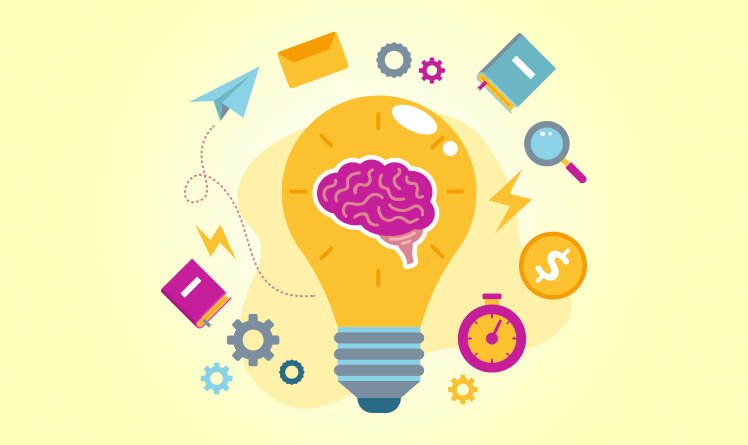Understand Cognitive Neuroscience and how it helps us understand learning

|
Getting your Trinity Audio player ready...
|
THE cognitive neuroscience It is one of the fields of neuroscience and is dedicated to the study of the neural bases of higher mental processes, such as memory, attention, language, perception and learning.
It combines traditional neuroscience with cognitive psychology to provide deep insights into how our brains work and how this influences our ability to learn and process information.
In this article, we will explore cognitive neuroscience in detail, revealing how it sheds light on the mysteries of human learning.
Cognitive Neuroscience: Unraveling the Mind
THE cognitive neuroscience is based on the premise that the brain is the epicenter of thought, memory and learning, and seeks to identify the neural connections and patterns of brain activity that underlie these cognitive functions.
But how does our brain acquire, process, and retain new information? How can we optimize the learning process based on the findings of this field of study? Let’s explore these important questions.
The Learning Process in the Brain
THE cognitive neuroscience teaches us that learning is not an isolated event, but a complex process that involves multiple areas of the brain. When we are exposed to new information, our neurons begin to form synaptic connections, allowing information to be processed and stored. Short-term memory and long-term memory play crucial roles in this process.
Brain Plasticity and Learning
One of the most exciting discoveries is the brain plasticity, the brain’s ability to adapt and change throughout life. This means that learning is not limited to childhood; our brains can continue to remodel themselves and create new connections as we age. This knowledge opens the door to more effective learning strategies and rehabilitation programs.
Cognitive Neuroscience and Education
The practical application of cognitive neuroscience in education is a growing field. Educators are using the findings of this field to develop more effective teaching approaches tailored to the individual needs of students. Strategies such as brain-based learning and active learning techniques are transforming the way we learn in the classroom.
Cognitive Neuroscience in Lifelong Learning
Learning shouldn’t be seen as an event that only happens at school. Cognitive neuroscience highlights the importance of lifelong learning to keep our minds healthy and resilient. The continued pursuit of knowledge can help prevent age-related cognitive decline and improve our quality of life.
How Cognitive Neuroscience can help with learning
Cognitive Neuroscience offers a solid scientific basis for improving the learning process, helping to understand how emotion, motivation, attention, socialization and memory are processed by the brain.
By applying this knowledge, educators can create more effective learning environments that are tailored to individual needs, thereby improving the quality of education.
Let's analyze how Cognitive Neuroscience can be applied in each of these areas:
Emotion:
Emotion plays a crucial role in learning, as it is closely linked to motivation and memory. Cognitive Neuroscience helps us understand how emotions affect attention, information retention, and cognitive processing in general. By understanding the neural basis of emotions, educators can create more stimulating and engaging learning environments, fostering emotional connection with content and thus facilitating knowledge retention.
Motivation:
Motivation is one of the key drivers of learning. Cognitive Neuroscience explores the areas of the brain associated with motivation and the reward system, providing insights into how to keep learners engaged and motivated.
Educational strategies that draw on neuroscience findings can help create a more motivating learning environment by identifying intrinsic and extrinsic rewards that stimulate the desire to learn.
Attention:
Attention is an essential prerequisite for effective learning. Cognitive Neuroscience investigates the brain mechanisms involved in selective and sustained attention. Understanding how the brain allocates and maintains attention allows the development of pedagogical strategies that minimize distractions and maximize focus, thus improving information absorption.
Socialization:
Socialization plays an important role in learning, especially in collaborative learning environments. Cognitive neuroscience explores how the brain processes social information, such as empathy, communication, and interaction with others. This is valuable for creating teaching strategies that promote collaboration, effective communication, and the development of interpersonal skills, all of which are crucial aspects of group learning.
Memory:
Memory is fundamental to learning, as it involves the retention and retrieval of information. Cognitive neuroscience investigates the neural basis of short-term and long-term memory, as well as the processes of encoding and consolidation. Understanding how memory works at the neural level allows educators to adopt teaching strategies that optimize information retention, such as the use of spacing and retrieval techniques.
In short…
In short, Cognitive Neuroscience offers a solid scientific basis for improving the learning process, helping to understand how emotion, motivation, attention, socialization and memory are processed by the brain.
By applying this knowledge, educators can create more effective learning environments that are tailored to individual needs, thereby improving the quality of content absorption.
Furthermore, Cognitive Neuroscience allows us to unravel the mysteries of the brain and apply this knowledge to other areas. As we continue to explore the intricate workings of the human brain, we can improve our teaching strategies, promote lifelong learning, and unlock the limitless potential of our minds.
Recommended reading:
- Cognitive Neuroscience (English Edition)
- Cognitive Psychology and Neuroscience: Theoretical Models and Applications
Image: Freepik

Marcel Castilho is an expert in neuromarketing, neuroscience, mindfulness and positive psychology. In addition to being an advertiser, he also has a Master's degree in NLP – Neurolinguistic Programming. As the owner and founder of the communications agency VeroCom and also of the digital agency Vero Contents, he has been studying human behavior for over 30 years.


